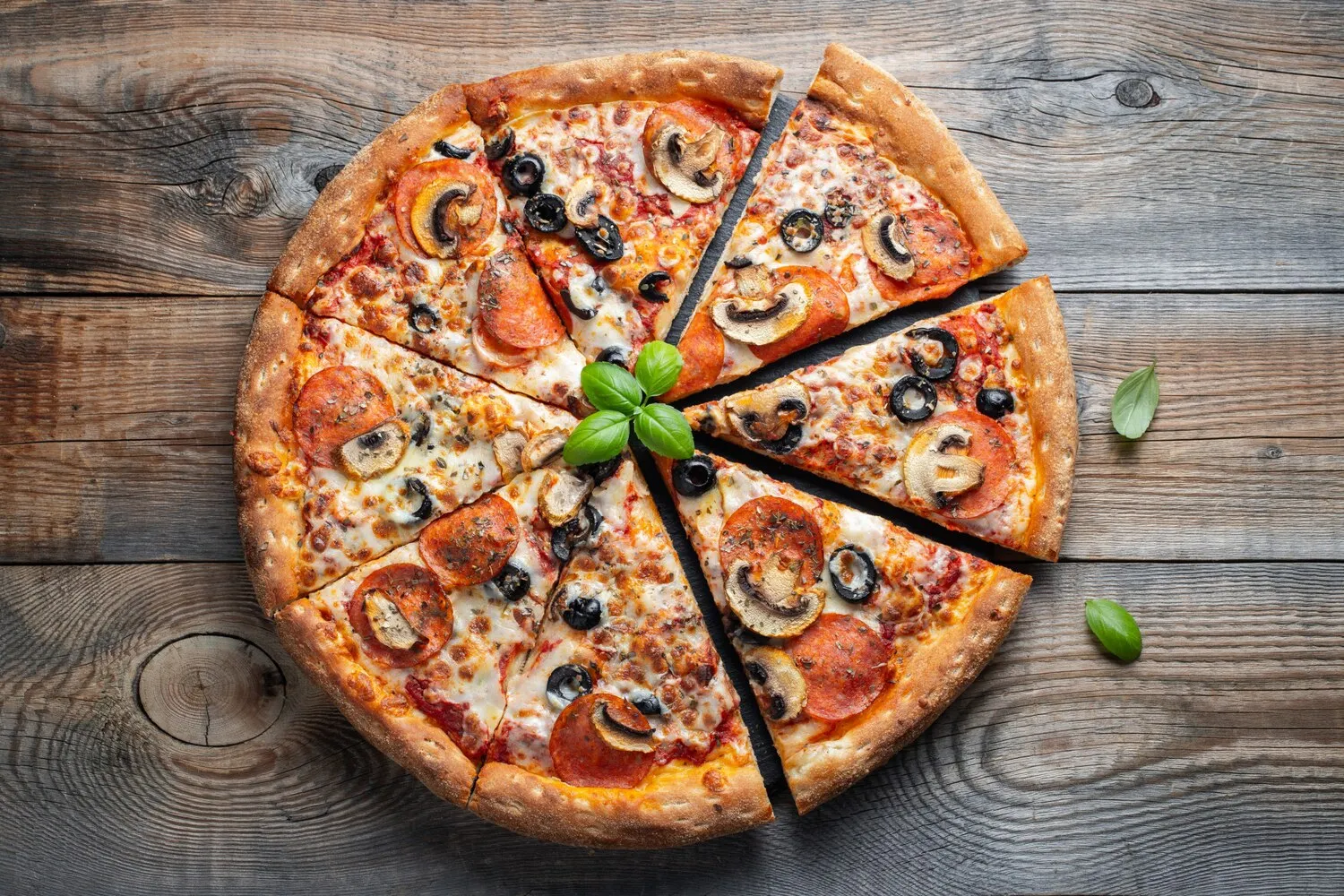
Pizza
Several stalls serve pizza, ranging from classic flavors to more creative combinations. A good variety available at the food square.
Nutrition Facts
* The % Daily Value (DV) tells you how much a nutrient in a serving of food contributes to a daily diet. 2,000 calories a day is used for general nutrition advice.
Imprensa Food Square
Pizza's history stretches back to ancient civilizations, with flatbreads topped with various ingredients being common in Mediterranean cultures. However, the modern pizza we know today originated in Naples, Italy, in the 18th or early 19th century as a food for the poor.
Pizza has become a global phenomenon, transcending its Italian origins to become a beloved food enjoyed in virtually every corner of the world. It represents comfort, celebration, and sharing.
Social Gathering Food
Pizza is frequently associated with social gatherings, parties, and family meals, making it a symbol of togetherness and casual enjoyment.
Regional Variations
While originating in Naples, pizza has evolved into numerous regional variations, such as New York-style, Chicago deep-dish, and Sicilian pizza, each with its unique crust, sauce, and toppings.
Popularity and Adaptability
Pizza is highly adaptable to local tastes and ingredients, resulting in countless variations that reflect regional culinary traditions.
Pizza offers a diverse range of flavors, blending savory, tangy, and sometimes sweet notes. The foundation is often a yeasty dough, topped with tomato sauce and cheese, and then customized with a vast array of toppings.
The classic Margherita pizza features the simple yet elegant flavors of tomato, mozzarella cheese, and fresh basil, representing the colors of the Italian flag. Other popular flavors include pepperoni, mushrooms, onions, peppers, olives, sausage, and anchovies. The combination of these ingredients creates a balance of acidity, richness, spice, and umami that appeals to a wide range of palates.
Dough Preparation
Use high-quality flour and allow the dough to rise slowly for optimal flavor and texture. Cold fermentation (resting the dough in the refrigerator for an extended period) can enhance the flavor development.
Sauce Quality
Opt for high-quality canned tomatoes or make your own sauce from fresh tomatoes for the best flavor. Season the sauce appropriately with herbs, garlic, and a touch of sugar to balance the acidity.
Oven Temperature
Cook pizza at a high temperature (ideally 450-500°F or higher) to achieve a crispy crust and melted cheese. A pizza stone or steel can help retain heat and ensure even cooking.
Toppings Balance
Avoid overloading the pizza with too many toppings, as this can make the crust soggy. Aim for a balance of flavors and textures.
Explore additional Pizza dishes and restaurants
Explore PizzaDiscover top dining spots and culinary experiences in Fortaleza.
Explore FortalezaLearn more about the food culture, restaurant scene, and culinary heritage of Brazil.
Explore Brazil